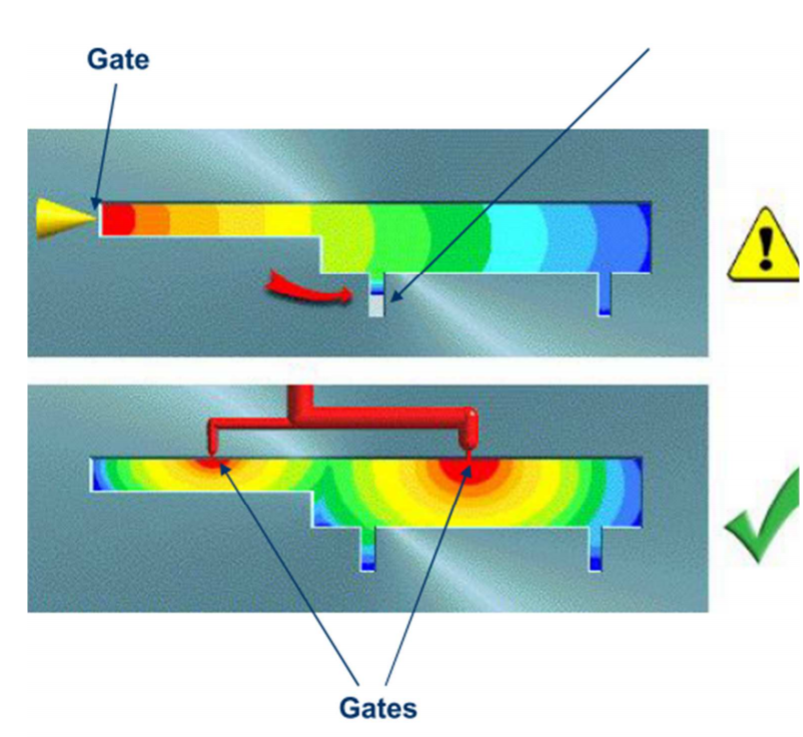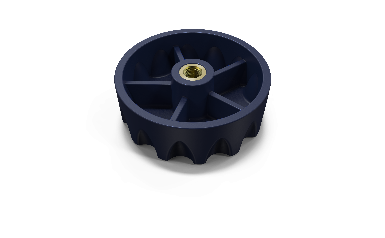MOLDBLADE INNOVATION ¡FOR A GREENER PRESENT!
In the world we live in, a lot of waste is generated, both from industry and households. In the past, all this waste was taken to a landfill site and left there to rot. Gradually, society realised that this practice was unsustainable for the environment and it was decided to separate waste according to the material it was made of. This also led to the recycling of various materials on an industrial level, such as glass, aluminium, paper and various plastics. Translated with www.DeepL.com/Translator (free version)
In the case of plastics, recycling helped the environment by greatly reducing the volume of plastic waste in landfills.
As society continued to develop, this was not enough, and in addition to the 1973 oil crisis in the United States, it was decided to look for polymers that were not synthesised or derived from petroleum.
Para reducir el impacto de los plásticos producidos del petróleo como poliésteres, polipropileno, cloruro de polivinilo, poliuretanos, polietileno, nylon y ABS, se empezaron a investigar y comercializar los primeros biomateriales, muchos de ellos obtenidos de diferentes especies del reino vegetal.
It is necessary to make a difference between a plastic being of bio origin and being biodegradable / biocompostable, as they are not the same and one does not necessarily have to be linked to the other.
What is a bio-based plastic?
Un plástico de origen bio, significa que se ha obtenido de unas materias primas renovables, como puede ser el caso de los derivados de la biomasa. Frente a los plásticos de origen bio, están los que se han obtenido de fuentes de energía no renovables como el petróleo. Es decir, que un plástico sea de origen bio o no, depende de la fuente de materia prima de la que se ha obtenido.
What is a biodegradable/biocompostable plastic??
Also, it is important to differentiate between a plastic that is biodegradable/biocompostable and one that is not. Biodegradable/biocompostable means that a material degrades through the action of micro-organisms such as bacteria, fungi and algae.
The difference between biodegradable and biocompostable is slight. To be considered biocompostable, it must decompose at a rate equal to that of compostable materials such as leaves, paper and wood chips and must not leave fragments that last more than 12 weeks in the waste, must not contain heavy metals or toxins and must allow plants to grow. If the material does not degrade or degrades at an extremely slow rate, the plastic is considered to be non-biodegradable.
This graph shows some examples of plastics classified according to their origin and their biodegradability:

PLASTICS OF ORGANIC ORIGIN.
CALMIDON-BASED PLASTICS.
Of all bio-based and biodegradable plastics, starch-based plastics stand out for their use. They are polysaccharides of vegetable origin and are usually extracted from sources such as potatoes, wheat and rice, among others.
Uses and advantages
Flexible packaging, bags, kitchenware, toys…
The disadvantage of these plastics is that they have a poor resistance to water as they are water-soluble.
PLASTIC PLA-BASED PLASTICS.
PLA is obtained by the polymerisation of lactic acid obtained mainly from corn, wheat and sugar beet.
Its main uses are packaging, 3D printing, bottles, shrink film…
Disadvantages include low UV resistance.
PHBV (POLY HYDROXYHYBUTYLVALERATE).
It is the least known of the three. It is achieved by feeding two types of bacteria called «Alcaligenes eutrophus» and «Escherichia coli» with glucose from the remains of harvesting plants (potato, wheat…).
It is used for various applications, including product packaging and the medical sector, as it is biocompatible, i.e. it is a polymer that is compatible with the human or animal body. It is a very promising material
Right now the main disadvantage is the cost of manufacturing.
The following table shows the potential for substitution of traditional materials by these three bio-based plastics according to their mechanical properties, price and density.

++ Complete replacement.
+ Partial replacement.
– Replacement not possible.
BIOCOMPOSITES.
No solo hay este tipo de polímeros al hablar de polímeros bio. Además de los nombrados anteriormente, hay veces que se decide llegar a una solución intermedia ya sea por coste, por propiedades mecánicas o por componente estético. De aquí nacen los biocomposites, que son una mezcla entre un polímero tradicional y fibras naturales.
A mass of natural fibres of between 20 and 70 % of the total weight is usually used. The most commonly used fibres are wood fibres in the form of fibres, particles or flour.
Las fibras más utilizadas son el cáñamo, el yute, el lino y el bambú. También se obtiene materia prima de residuos agroforestales como son las cáscaras de frutos secos, especialmente de la almendra y de las pipas de girasol o de los huesos de aceituna.
Depending on the hardness of the selected wood, characteristics such as the flexural and tensile modulus of the composite will be higher or lower.
BIONANOCOMPOSITOS
Similar to biocomposites are bionanocomposites, which are in an experimental phase. The difference is that in order to be considered a bionanocomposite, the fibre particles have to be less than 100nm in size.
The advantage they have over normal composites is that, due to their small size, the load is distributed almost uniformly throughout the material. In addition, because the particles are so fine, they can increase the characteristics of the polymer and ensure that if the polymer is biocompatible, it does not lose its biocompatibility.
Desde MOLDBLADE Eco-friendly manufacturing we work with a wide range of traditional polymers and composites, biodegradable, water-soluble, recycled plastic bioplastics and, increasingly, with biopolymers and biocomposites. If you want to carry out a project contact us and you will have professional advice and extensive experience in the plastics injection sector..



